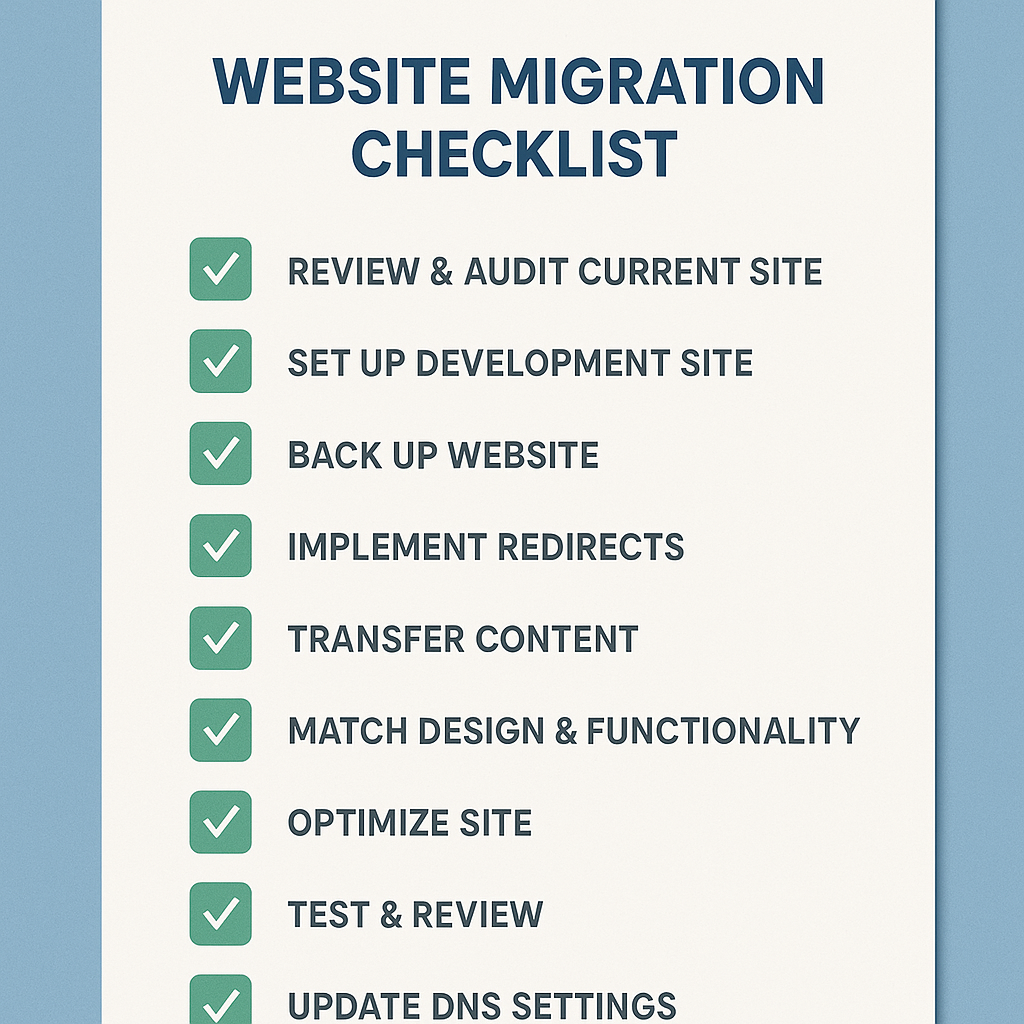Guide to improving Core Web Vitals for enquiries and SEO
Core Web Vitals show how fast your site loads, responds and stays stable for real users. Improving core web vitals lifts web performance and enquiry rates. Faster LCP lowers bounce, smaller JS bundles improve INP and stable layouts reduce mis-taps. This complete guide explains how to measure and improve your website’s performance and turn better core web vitals scores into leads. If you want help, ask about our SEO services or book an audit.

Understand core web vitals and why enquiries follow
Core Web Vitals measure loading, responsiveness and stability; improving core web vitals reduces friction so more users stay, engage and enquire.
Definition: Web Vitals are a set of user-centred performance signals. Google’s Core Web Vitals focus on three core web vital metrics that reflect the best user experience on real devices.
When the hero content appears quickly, people orient and read. When taps trigger a paint promptly, forms feel reliable. When layouts stay still, users do not mis-tap. Pages with better vitals scores are more likely to keep attention and convert. Chasing vitals isn’t about vanity. It is about fewer drop-offs and more qualified leads.
- LCP shows how quickly the main content appears.
- INP shows how fast the page reacts after a tap or click.
- CLS shows how stable content remains during load.
Web Vitals is no longer just for engineers. Marketing and product teams should understand core web vitals because the impact of core web vitals is commercial.
Are Core Web Vitals a ranking factor
Google uses Core Web Vitals as supportive quality signals, not a magic switch. Google considers many systems. Strong content plus good UX performs best in Google search results.
What is a good LCP score
Aim for LCP of 2.5 seconds or faster at the 75th percentile on mobile. Improve your LCP score by fixing server time, hero media and render path priorities first.
Is INP replacing FID
Yes. Interaction to Next Paint replaced First Input Delay in 2024. INP reflects the full path from input to next paint, so it captures responsiveness that users feel.
Quick ways to improve CLS
Improve your CLS score by sizing images and video, reserving ad and embed slots and using font-display swap or optional with preloaded fonts.
How long to see improvements
Field data updates as users visit. High-traffic templates often show movement in days. Smaller sites may need weeks to collect enough data to measure and improve.
The three core web vitals metrics today
Today’s core web vitals metrics are LCP, INP and CLS; INP replaced FID in 2024 and thresholds define good, needs improvement and poor for web performance.
| Metric | Good threshold | Needs improvement | Poor | What it reflects |
|---|---|---|---|---|
| LCP | ≤ 2.5 s | 2.5–4.0 s | > 4.0 s | Largest Contentful Paint, perceived loading |
| INP | ≤ 200 ms | 200–500 ms | > 500 ms | Interaction to Next Paint, responsiveness |
| CLS | ≤ 0.10 | 0.10–0.25 | > 0.25 | Cumulative Layout Shift, visual stability |
Evaluate at the 75th percentile of real visits. Map each metric to templates. An image-heavy blog harms LCP, a JS-heavy checkout harms INP and a banner-driven home harms CLS. These core web vitals matter because each one blocks progress to enquiry. Treat them as the minimum standard for good core web vitals scores across your site’s core web vitals.
Measure core web vitals with Google tools
Use your Google Search Console account and CrUX for field truth, then use tools like PageSpeed Insights and Lighthouse to audits web pages.
- Google Search Console groups URLs by status and core web vital scores.
- Chrome UX Report provides anonymised field data for your origin.
- PageSpeed Insights combines field snapshots with lab suggestions.
- Lighthouse runs lab diagnostics so you can isolate problem code.
Start with field data to find where website’s core web vitals fail. Reproduce issues in lab to see why. Release fixes, then validate in field. This guide breaks the loop into clear steps so you can measure core web vitals, improve performance and report wins to stakeholders.
Improve your LCP score with focused loading wins
To improve your LCP score, optimise server time, hero media and render path so the largest contentful paint appears fast on mobile.
Start by cutting Time To First Byte with caching at the edge and lighter middleware. Convert hero images to AVIF or WebP, compress hard and size exactly. Preload the hero image and key font to shorten the critical path. Inline a small slice of critical CSS so text paints fast, then load the rest asynchronously. Prioritise the element that actually becomes the LCP candidate.
- Serve next-gen formats with exact dimensions.
- Use a CDN with HTTP/2 or HTTP/3 and smart caching.
- Preload hero image, critical CSS and key font files.
- Reduce render-blocking scripts and unused CSS quickly.
Improve your website’s performance where users land first. When the main content paints promptly, the page earns permission to load the rest while people engage.

Improve your INP so interactions feel instant
Split heavy JavaScript, use web worker patterns and defer non-critical code so interaction to next paint stays under 200 ms.
Audit long tasks and identify heavy components. Code-split routes so pages load only what they need. Move data transforms to a web worker to keep the main thread free. Defer analytics, heatmaps and chat that do not affect first interaction. Prefer native elements over complex custom widgets. Provide immediate visual feedback so taps feel acknowledged even if work continues.
- Break tasks longer than 50 ms into smaller chunks.
- Dynamically import rarely used modules.
- Use web workers for expensive parsing and transforms.
- Reduce hydration cost with server-rendered output where suitable.
In web development, responsiveness equals trust. Improve user experience by ensuring tap to paint is swift on mid-range Android devices, not just on desktops.
Improve your CLS score to keep pages stable
Reserve space for media and ads, load fonts predictably and avoid late DOM injections to prevent layout shifts that break trust.
Common problems include unsized images, late font swaps and banners injected above content. Add explicit width and height to images. Use aspect-ratio boxes for embeds. Preload fonts and set font-display to swap or optional. Place banners in a reserved container so they do not push content down when they appear.
- Always include image and video dimensions.
- Reserve fixed slots for ads and third-party embeds.
- Preload fonts and choose fallbacks with similar metrics.
- Avoid inserting elements above already rendered content.
Stable templates keep buttons where users expect them. That stability supports form completion and enquiries on mobile.
Core Web Vitals and SEO ranking reality
Google uses Core Web Vitals as quality signals; great content plus good UX supports visibility and improves conversion efficiency.
Core web vitals can impact discovery and engagement, but they do not work in isolation. Treat vitals as a ranking factor only in context. Google considers relevance, intent and many systems. Core web vitals directly improve user behaviour on page, which makes every visit more valuable. Focus on the pages that already have impressions and clicks to rank higher in Google more reliably.
- Content quality remains decisive in Google search results.
- Fast, stable pages reduce pogo-sticking and wasted crawl budget.
- Better UX improves ad quality scores and time on task.
Do Core Web Vitals directly change rankings
They support page experience signals. Improving its Core Web Vitals helps users and can stabilise visibility, but content and intent match lead outcomes.
Which pages should we fix first for SEO
Fix templates that drive leads and already earn clicks. Improving your core web vitals on these pages moves outcomes fastest.
Is chasing scores worth it
Chasing scores alone is not the goal. Improve your scores where they unlock enquiry gains. Features that convert should be made lighter, not removed.
Prioritise the fixes that lift enquiries first
Target templates tied to leads, fix regressions by impact and effort, and ship quick wins while planning deeper refactors.
Use a simple matrix that scores each opportunity for impact on enquiries, engineering effort and risk. Fix high-impact, low-effort tasks immediately such as compressing hero images, reserving ad slots and setting caching rules. Plan medium and high-effort items such as bundle splitting and font strategy for sprint windows. Always validate with field data after release.
Impact versus effort guide:
- High impact, low effort: hero image optimisation, caching rules, CLS sizing.
- High impact, medium effort: JS splitting, font loading strategy, API caching.
- High impact, high effort: component refactors, hydration reduction, framework upgrades.
- Medium impact, low effort: remove duplicate tags, lazy-load below-the-fold media.
Tie each change to a measurable action such as form start rate or click to call so core web vitals impact is visible.
If it is urgent do this first
Stabilise worst CLS, compress oversized hero images and cache HTML to stop immediate revenue leakage.
Triage by revenue paths. If the quote form jumps, ship a layout fix today. If LCP is slow due to uncompressed hero media, convert and resize the top assets. If TTFB is high, enable CDN HTML caching where safe and reduce middleware. These are practical ways to optimise core web vitals fast.
- Add explicit sizes to above-the-fold media.
- Convert and resize the top five hero images.
- Enable sensible caching for HTML and APIs at the edge.
Rapid moves protect income while you plan deeper work to optimize core web vitals across the whole site.
When not to proceed with heavy optimisation
If traffic is low or a redesign is imminent, focus on content and conversion basics before deep web development work.
Very small sites may not see fast payback from complex engineering tasks. If a redesign is weeks away, avoid deep code changes to retiring templates. If analytics are unreliable, fix measurement first so wins can be proven.
- New sites with limited traffic should prioritise content and CRO.
- High-debt codebases may need a stabilisation sprint first.
- Imminent redesigns should limit work to safe, transferable quick wins.
You can still improve your website’s performance with image compression, caching and CLS spacing while planning the future build.
What affects the timeline and cost
Platform, hosting, images, JS and third parties set effort; align scope with measurable outcomes for website’s performance.
| Factor | Typical impact | Notes |
|---|---|---|
| Platform and hosting | Medium to high | Server rendering, edge caching and TTFB shape LCP. |
| Images and media | High | Hero media often dominates the critical path. |
| JavaScript weight | High | Hydration and long tasks drive INP. |
| Third-party tags | Medium | Some tags block the main thread or shift layouts. |
| Templates count | Medium | Shared components multiply change impact. |
Scope to the pages that generate money. This is how you improve your site’s Core Web Vitals and get measurable gains without over-engineering.
Measure and improve with reporting cadence
Track URL groups in Search Console, annotate releases and compare enquiry rates so you can measure and improve with confidence.
- In your Google Search Console account, open Core Web Vitals and export groups monthly.
- Annotate releases in GA4 and your backlog with the changes shipped.
- Compare enquiry rate on improved templates versus controls.
This loop connects engineering to outcomes. When releases land, confirm field trends, report core web vital scores and link improvements to conversions.
How this connects to related work
Core Web Vitals sit alongside content, technical SEO and CRO; aligned roadmaps produce the best user experience and stronger Google search results.
Technical SEO improves crawling and rendering, which compounds with faster pages. CRO benefits when layouts are stable and feedback is instant. Content teams improve your website’s performance by right-sizing media and lazy-loading with intent. Coordinate releases so schema, internal linking and performance land together on key templates.
- Technical health plus speed improves discoverability.
- CRO gains compound when responsiveness reduces friction.
- Content strategy and performance share media constraints.
Best practices checklist to optimise core web vitals
Core principles reduce waste, prioritise the critical path and protect stability across devices.
- Preload the hero image, critical CSS and key font.
- Convert images to AVIF or WebP with exact dimensions.
- Cache HTML and API responses at the edge where safe.
- Defer or remove non-essential third-party tags.
- Break up long tasks and reduce hydration work.
- Reserve slots for ads, embeds and notifications.
- Test changes on mid and low-end mobile devices.
Glossary to understand core web vitals
Field data: Real-user measurements captured across visits.
Lab data: Simulated tests useful for debugging.
TTFB: Time from request to first byte of response.
Long task: Main thread work that blocks input for more than 50 ms.
CrUX: Chrome UX Report.
PageSpeed Insights: Google tool that shows lab and field data.
Lighthouse: Audit tool that analyses and audits web pages locally.
Frequently asked questions
Do Core Web Vitals directly change rankings
They act as supportive signals. Web vitals as a ranking factor only make sense alongside relevance and intent. Improve user experience and visibility tends to stabilise.
What LCP target should we use
Target 2.5 seconds or faster at the 75th percentile for mobile. Start with server time, hero media and critical path priorities to improve your core web.
How is INP different from FID
INP measures the full time from input to next paint. It replaced FID because it better reflects responsiveness that people feel on real devices.
What causes bad CLS on my site
Late-loading ads, unsized images, custom fonts without fallbacks and banners injected above content commonly push elements and trigger shifts.
Which tools should I rely on
Use tools like PageSpeed Insights and Lighthouse for diagnosis, with Search Console and CrUX as field truth. Together they help you measure core web vitals and improve your scores.
Next steps
Start in Google’s Core Web Vitals report, pick the worst-performing lead templates and fix the simplest bottlenecks first. If you are looking for ways to improve and want an ultimate guide applied to your stack, book a Core Web Vitals audit. Prefer in-house changes Instead, ask about SEO services and a performance plan to optimise core web vitals and rank higher in Google.





